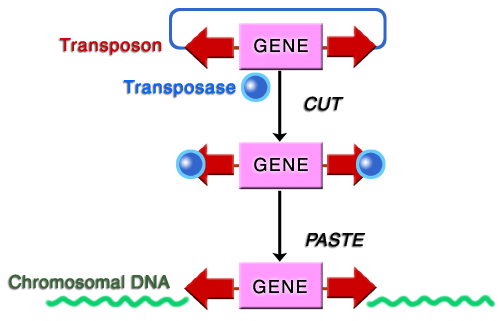GENE DELIVERY TECHNOLOGY

The Sleeping Beauty (SB) transposon system in a non-viral carrier of genetic information that can insert a gene into vertebrate (human) chromosomes in order to confer a new function or replace a defective gene. The SB transposon system exhibits considerable promise as a long-lasting, safe way to insert genes into the chromosome of cells without using a viral vector.
Four patent applications covering the introduction of new genes into eukaryotic cells using the SB transposon system have been filed, with the base patent issued in 2002 (United States Patent 6,489,458; Hackett, et al., December 3, 2002; DNA based transposon system for the introduction of nucleic acid into the DNA of a cell).
The SB transposon system is a dynamic biological device that consists of:
1. The SB transposon.
2. The SB transposase which is specific to the SB transposon.
3. A therapeutic gene to be inserted into the host cell DNA. Once the system is introduced into the host cell, a transposase protein is expressed which cuts the target gene out of the SB transposon system and inserts it into the host DNA where the protein that the gene encodes can be expressed.
Immusoft is acquiring exclusive access to the SB transposon system though acquisition of Discovery Genomics (June 2015). This transaction will bring SB transposon IP, deep know-how working with the SB system and gene therapy, as well as ongoing SBIR grants focused on use of the SB transposon system in several disease areas.
Work done by Discovery Genomics (DGI) and investigators around the globe have demonstrated the broad utility, the efficiency of gene incorporation and safety of the SB transposon system. Since it is non-viral, immunological reactions frequently associated with viral vectors are not anticipated. The SB transposon system comes with a proprietary Activation-Safe ™ that minimizes the possibility of unintentionally activating other genes, which is always a safety concern. Although integration of the Transposase gene is not expected, the gene has been intentionally inserted into mice and no adverse effects were observed over several generations involving hundreds of mice.
International validation has shown the original SBTS to be 10-fold more active than others.


References:
-
Ivics, Z., P.B. Hackett, R.A. Plasterk, and Z. Izsvak (1997). Molecular reconstruction of Sleeping Beauty: a Tc1-like transposon from fish and its transposition in human cells. Cell 91: 501-510
-
Geurts, A.M., Y. Yang, K.J. Clark, Z. Cui, A.J. Dupuy, J.B. Bell, D.A. Largaespada and P.B. Hackett (2003). Gene transfer into genomes of human cells by the Sleeping Beauty transposon system. Mol. Therapy 8: 107-116
